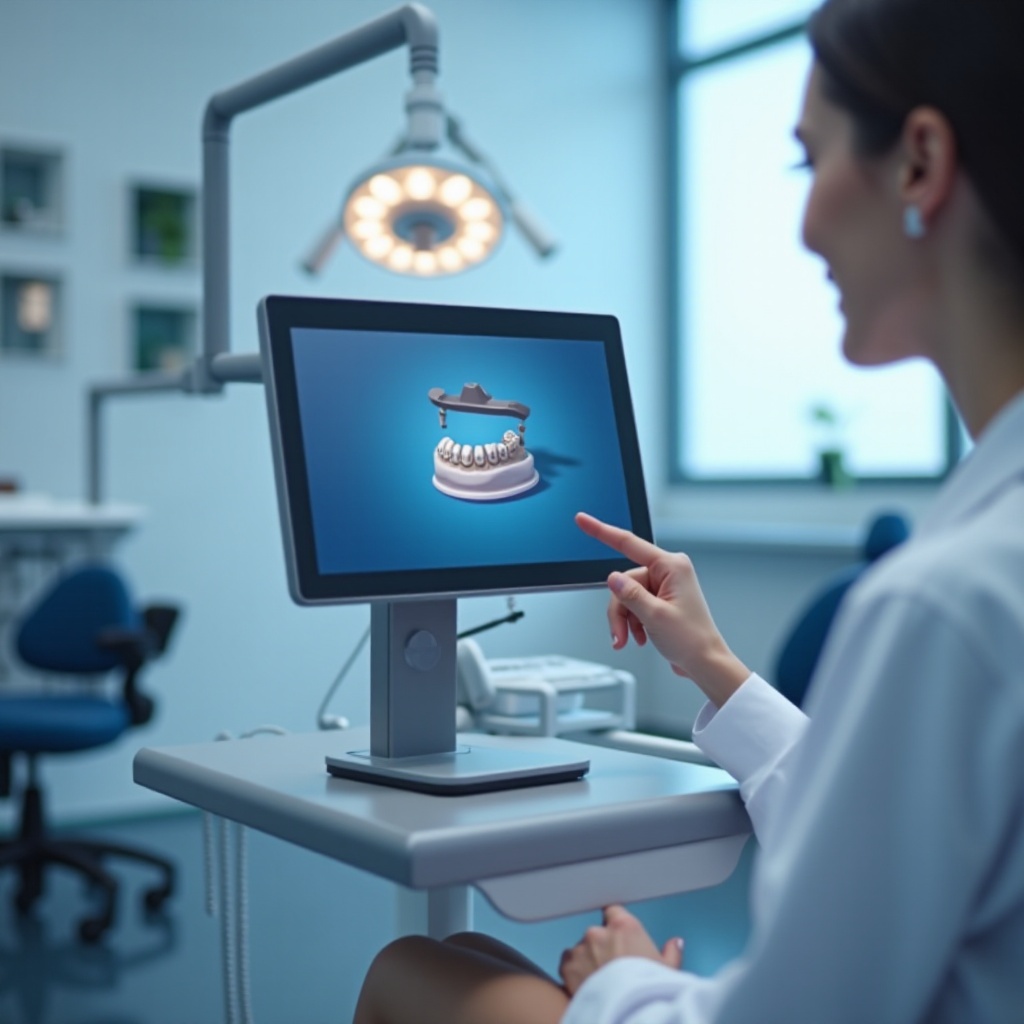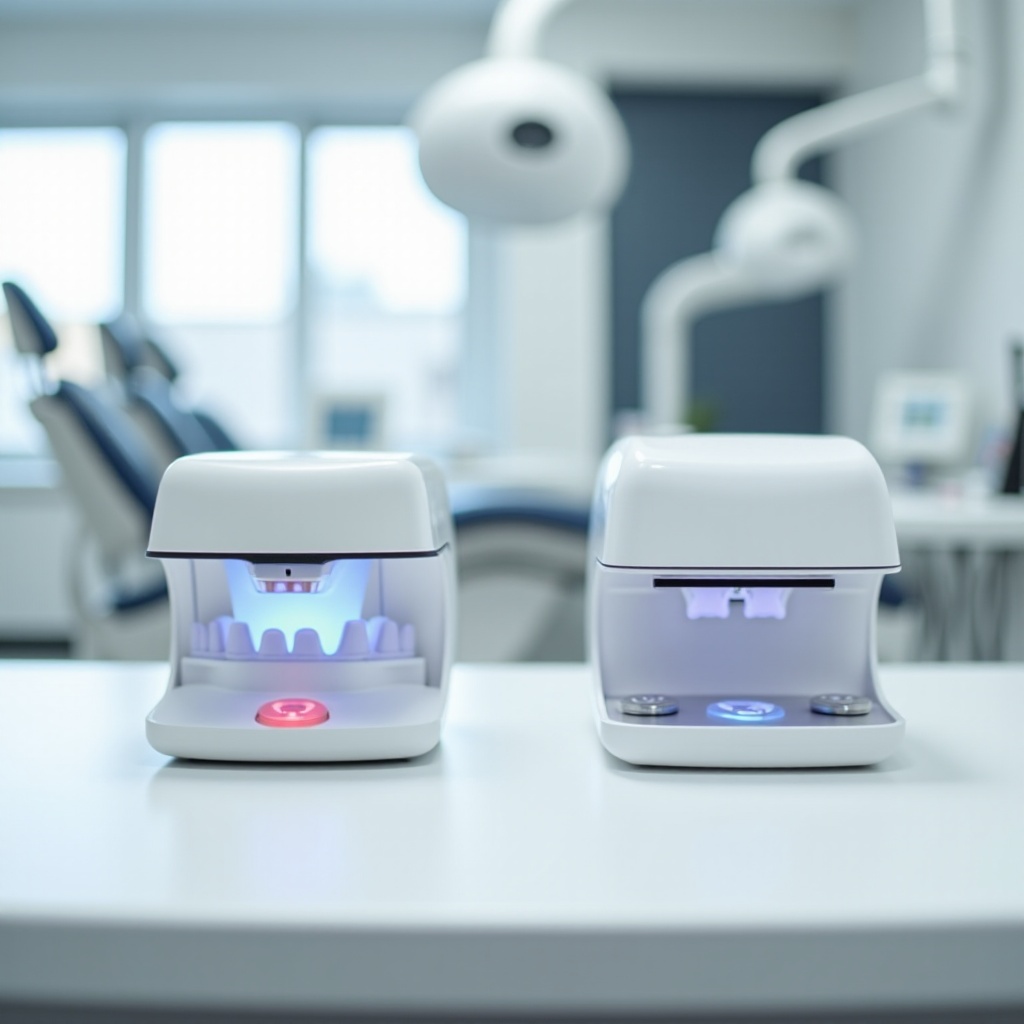Introduction
The dental industry is evolving rapidly with technological advances, greatly improving the precision and efficiency of dental treatments. One such advancement is Invisalign compatible scanners, which play a pivotal role in modern orthodontics. These scanners offer seamless integration with Invisalign treatments, providing accurate digital impressions and optimizing workflows. Understanding the range and benefits of these scanners can assist dental professionals in making informed decisions to enhance their practices.

Understanding Intraoral Scanners
Intraoral scanners have transformed patient experience by replacing traditional, cumbersome impression methods with speedy, comfortable, and precise digital scans. By capturing detailed imagery of the teeth and gums, these scanners generate a 3D model used in various dental procedures, notably Invisalign treatments. Their user-friendly, accurate, and efficient design significantly boosts patient satisfaction and treatment outcomes.
Specifically designed for compatibility with the Invisalign system, these scanners ensure that digital impressions are directly used to create Invisalign aligners—vital for reliable and effective treatments.
Key Features of Invisalign Compatible Scanners
Invisalign compatible scanners offer a plethora of features making them indispensable in a modern dental practice:
- High Accuracy: Precision is critical in orthodontics. These scanners deliver exceptional accuracy, ensuring highly detailed and precise digital impressions.
- Real-Time Feedback: Many scanners provide real-time feedback, allowing dentists to make immediate adjustments and enhancements.
- Ease of Use: User-friendly interfaces and streamlined workflows ensure that dental practitioners can operate these scanners with minimal training.
- Integration Capabilities: These scanners integrate seamlessly with Invisalign software, allowing smooth data transfer and efficient treatment planning.
- Patient Comfort: The non-invasive nature of intraoral scanners ensures comfort for patients, enhancing their overall experience.
Being aware of these features aids dental professionals in choosing the right scanner, guaranteeing optimal patient results.

Top Invisalign Compatible Scanners of 2024
Choosing from the myriad of available Invisalign compatible scanners can be overwhelming. Here are four notable scanners that stand out due to their distinctive features and benefits.
Scanner 1: iTero Element 5D Plus
- Features and Benefits: The iTero Element 5D Plus stands out with its innovative near-infrared technology for detecting interproximal caries without radiation. It provides high-definition color imaging and comprehensive 3D scans, ensuring superior accuracy. The scanner’s integrated intraoral camera adds further functionality, making it an excellent choice for dental professionals.
Scanner 2: 3Shape TRIOS 4
- Features and Benefits: The TRIOS 4 by 3Shape offers next-generation scanning capabilities, including enhanced speeds and a long-lasting battery. Its wireless design adds convenience and flexibility, while the Smart Tips with instant-heat technology ensure optimal scanning performance. The intuitive software facilitates seamless integration with Invisalign and other dental applications.
Scanner 3: Medit i700
- Features and Benefits: The Medit i700 is known for its lightweight design and USB connectivity, making it user-friendly for many dental practices. It delivers fast scanning speeds and high-precision images. Its open-source nature allows broader integration with various dental software, including Invisalign, making it a versatile tool in orthodontic settings.
Scanner 4: Planmeca Emerald S
- Features and Benefits: The Planmeca Emerald S offers high-speed scanning with superior accuracy, making it a reliable option for Invisalign treatments. It features a compact design and user-friendly interface. Its advanced color and shading system ensures detailed 3D images, facilitating precise treatment planning. The scanner’s compatibility with multiple software platforms enhances its appeal.
Choosing the right scanner involves considering the specific needs of the dental practice and the unique features each scanner offers.
Comparative Analysis of Top Scanners
Comparing these top scanners involves evaluating key aspects:
- Accuracy: All four scanners offer high accuracy, ensuring reliable digital impressions for Invisalign treatments.
- Ease of Use: Scanners like the iTero Element 5D Plus and Medit i700 feature user-friendly interfaces and lightweight designs.
- Integration: While all mentioned scanners offer excellent integration capabilities, the 3Shape TRIOS 4 stands out with its wireless design, adding flexibility.
- Additional Features: Unique features such as iTero’s near-infrared technology and Planmeca Emerald’s advanced color system further distinguish these models.
Evaluating these factors helps dental professionals determine the most suitable scanner for their practice, balancing precision, ease of use, and additional functionalities.

Integrating Scanners into Your Dental Practice
Successfully integrating these scanners into a dental practice requires a systematic approach and comprehensive training.
Initial Setup and Training
- Initial Setup: Follow manufacturer guidelines meticulously for proper scanner installation.
- Training: Engage in comprehensive training programs provided by manufacturers to ensure proficiency in scanner operation.
Optimizing Workflow
- Integrate scanner use into the practice’s daily routine for streamlined scanning processes.
- Utilize real-time feedback capabilities to minimize errors and perfect treatment planning.
Data Management and Security
- Implement robust data management systems to ensure secure storage and handling of digital impressions.
- Regularly update software to maintain compatibility and enhance security features.
Effective integration can significantly boost operational efficiency and treatment outcomes.
Future Trends in Scanner Technology
Future trends indicate enhanced AI capabilities, which will further improve the accuracy and efficiency of Invisalign compatible scanners. Cloud-based technologies and advanced data analytics will transform treatment planning and patient management. Additionally, developments in digital imaging and 3D printing technologies will further integrate with intraoral scanners, heralding a new era of patient care.
Conclusion
Invisalign compatible scanners are essential to modern orthodontic practices, offering precision, efficiency, and improved patient experiences. By understanding the top scanners’ key features and benefits and effectively integrating these tools, dental professionals can considerably enhance treatment outcomes.
Frequently Asked Questions
What are the main benefits of using an Invisalign compatible scanner?
Using an Invisalign compatible scanner ensures high accuracy of digital impressions, seamless integration with Invisalign treatments, real-time feedback, and enhanced patient comfort.
How do I ensure my scanner stays compatible with future Invisalign updates?
Regularly update your scanner software as provided by the manufacturer and participate in training programs to stay informed about the latest updates and features.
Are there any ongoing costs associated with using these scanners?
Yes, there may be ongoing costs for software updates, maintenance, and optional training programs to ensure optimal performance and proficiency in using the scanner.

